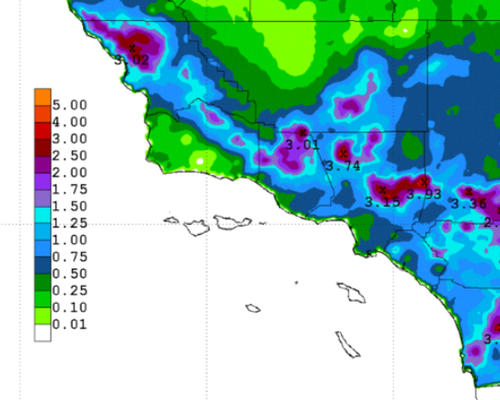Improved extreme weather forecasting
Rainfall map
Image Credit: Todd B. Kimberlain Public Domain
Complex atmospheric simulations, so-called convective permitting models (CPM), are used for climate predictions. In contrast to older models, these allow a significantly higher spatial resolution and can reproduce deep convection processes more directly. This enables reliable forecasts over periods of weeks, days and even hours.
With climate change, precipitation patterns are changing in many places and weather extremes such as short-term heavy rainfall are increasing. These events can cause flooding or mudslides with devastating damage to people and the environment. Therefore, it is important to determine whether current CPMs also allow for under-hourly forecasts so that weather extremes can be detected earlier.
The Data
The data set contains raw model data sorted by year and month (July - October). The respective data include two- and three-dimensional variables on precipitation frequency and amount, soil moisture, atmospheric pressure, and albedo, among others. These raw data were then dynamically downscaled in resolution from 0.11° to 0.02°.
Publication of the data set: Meredith EP, Ulbrich U et al (2019) http://hdl.handle.net/21.14106/4331617ed44fc1839e232c2500f345ca8e194cf2
Research results
It was shown that CPM users do not have to worry about degradation of precipitation projections or forecasts when switching from hourly to sub-hourly resolutions. While biases still exist, no compelling evidence was found that these biases are stronger for sub-hourly forecasts than for hourly forecasts. This is especially true for extreme values, the class of events for which higher spatial and temporal resolutions are of greatest interest. The authors of the study emphasize the utility of CPMs as a tool for studying extreme precipitation, the associated mechanisms, and their changes at the hourly scale, while recommending the application of these models to extreme precipitation events at sub-hourly time scales.
Texts modified according to Meredith EP, Ulbrich U et al (2020) https://doi.org/10.1088/1748-9326/ab678
